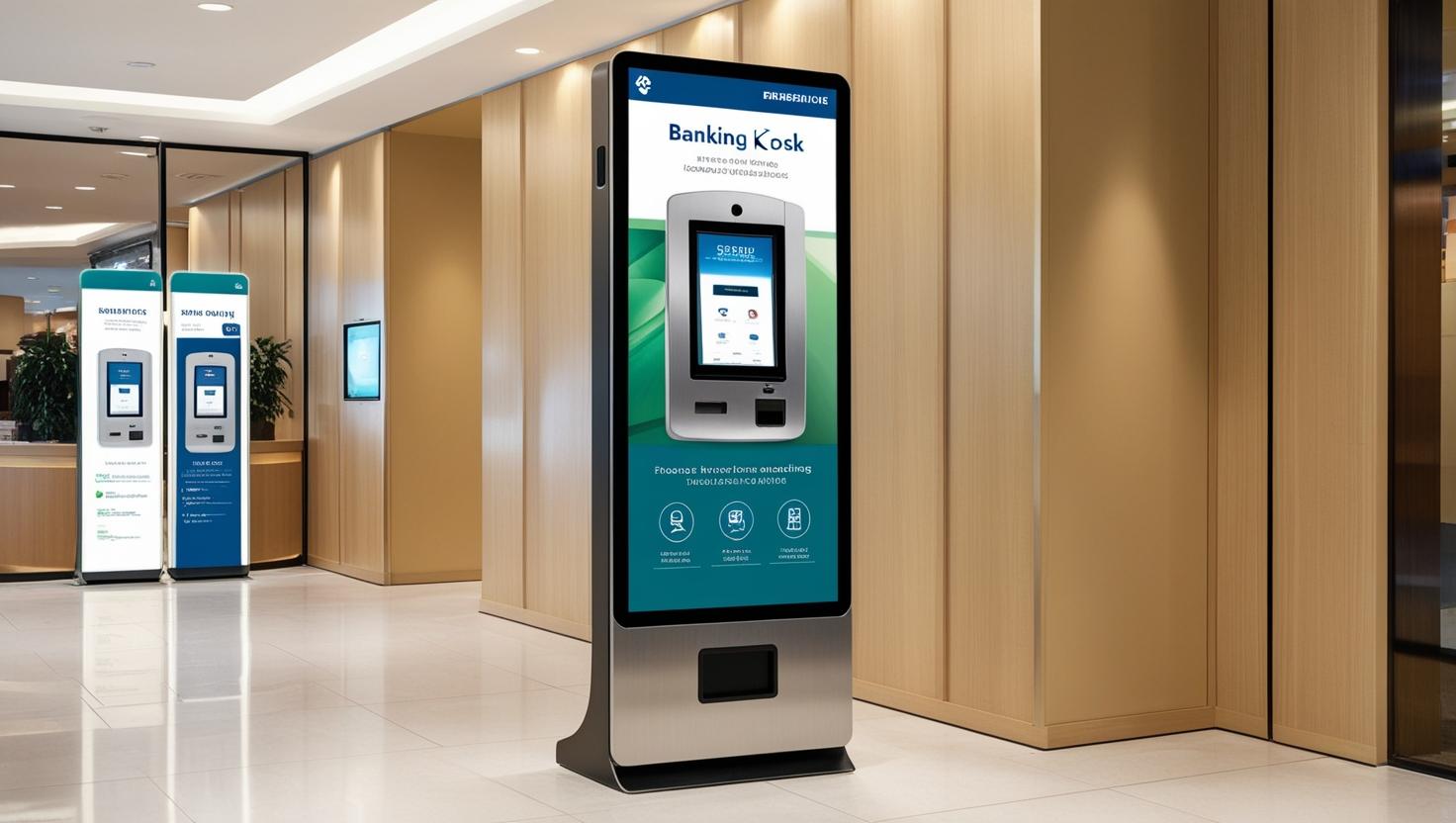The interactive kiosk industry is experiencing a surge in global demand, driven by a convergence of technological innovation, shifting consumer behavior, and the growing need for efficient, self-service solutions across various sectors. As we step into 2025 and look beyond, the market for interactive kiosks is poised to expand rapidly, underpinned by trends in smart retail, digital banking, healthcare automation, and contactless services.
Changing Consumer Expectations in a Digital Era
Modern consumers expect speed, personalization, and convenience—and interactive kiosks deliver all three. Whether it’s ordering a meal at a fast-food chain, checking into a hotel, or accessing health services, kiosks offer a seamless user experience. The demand for contactless and self-service technologies, accelerated by the COVID-19 pandemic, continues to persist even as societies normalize. This ongoing behavioral shift is encouraging businesses to invest heavily in digital interfaces that reduce friction in customer interaction.
Download PDF Brochure @ https://www.marketsandmarkets.com/pdfdownloadNew.asp?id=221409707

Retail and QSR: Leading the Adoption Curve
Retailers, especially in the quick service restaurant (QSR) segment, are at the forefront of kiosk deployment. Interactive kiosks not only reduce wait times and enhance order accuracy but also allow companies to upsell and cross-sell products more effectively. According to industry analysis, retail will account for the largest market share in the interactive kiosk industry through 2029. Customization, loyalty integration, and digital payment capabilities are turning kiosks into profit centers rather than just cost-saving tools.
Healthcare Goes Digital with Kiosks
The healthcare sector is increasingly adopting kiosks for patient check-in, appointment scheduling, and information dissemination. These kiosks improve operational efficiency, reduce administrative workload, and ensure HIPAA-compliant patient interactions. With telemedicine, electronic health records (EHR), and AI-enabled diagnostics gaining momentum, kiosks are becoming essential interfaces in modern medical environments.
Banking and Financial Services Go Touchless
Banks and fintech players are leveraging kiosks to bridge the digital divide, especially in underbanked or rural regions. Interactive banking kiosks now offer services beyond cash withdrawal—such as account opening, loan processing, and biometric authentication. The growing preference for self-service banking, especially among younger consumers, is making kiosks a strategic investment for global banks.
Technological Innovations Powering Smart Kiosks
The next generation of kiosks is far more advanced than their predecessors. Integration with AI, machine learning, computer vision, and IoT sensors is enabling smarter, context-aware functionality. These kiosks can now deliver dynamic content, respond to voice commands, perform facial recognition, and provide real-time analytics to businesses.
Furthermore, modular design and cloud-based management are making deployment easier and more scalable. From remote diagnostics to automatic software updates, operators can manage fleets of kiosks across geographies with greater ease than ever before.
Opportunities in Transportation and Smart Cities
Transportation hubs such as airports, railway stations, and bus terminals are adopting interactive kiosks for ticketing, check-ins, navigation, and emergency information. The global push toward smart city development is further amplifying the role of kiosks as urban service nodes, offering everything from wayfinding and local information to government services and public Wi-Fi.
Sustainability and Energy Efficiency Take Center Stage
Manufacturers are also prioritizing energy-efficient displays, recyclable materials, and solar-powered kiosks to align with global sustainability goals. As environmental concerns influence both consumer preference and regulatory requirements, the kiosk industry is adapting to be greener and more future-ready.
Opportunities driving the Interactive Kiosk Industry growth in 2025 and beyond:
-
Rising Demand for Contactless Services – Fueled by post-pandemic preferences in retail, healthcare, and hospitality.
-
Growth in Smart Retail & QSR – Upselling, personalization, and faster checkouts via kiosks.
-
Digital Transformation in Healthcare – Patient check-in, diagnostics, and telehealth integration.
-
Self-Service Banking Expansion – Interactive kiosks for 24/7 banking in urban and rural areas.
-
Smart City Integration – Kiosks as digital access points for public services and navigation.
-
Technological Advancements – AI, voice recognition, facial authentication, and remote management.
-
Transportation Sector Growth – Ticketing, passenger check-in, and real-time updates.
-
Sustainability-Driven Innovation – Energy-efficient, solar-powered, and recyclable kiosk designs.
-
Rural and Underserved Market Reach – Extending services without physical branches or offices.
-
Omnichannel Customer Engagement – Bridging online and offline experiences for brands.
Challenges and the Road Ahead
While the interactive kiosk market is on an upward trajectory, it faces challenges related to cybersecurity, hardware maintenance, and user accessibility. Ensuring ADA compliance and building user-friendly interfaces for all demographics remain critical. Additionally, the upfront cost of deployment can be a hurdle for small and medium enterprises.
However, as hardware costs continue to decline and software becomes more flexible and powerful, these barriers are expected to lessen. With increased investment and innovation, the interactive kiosk market is set to diversify into new industries and geographies.
Final Outlook
By 2029, the interactive kiosk market is expected to reach new heights, with analysts projecting billions in revenue globally. The industry’s growth is being driven not only by advancements in technology but also by the world’s increasing desire for autonomy, efficiency, and digital interaction. From retail to public services, interactive kiosks are rapidly becoming a permanent fixture of modern infrastructure.
